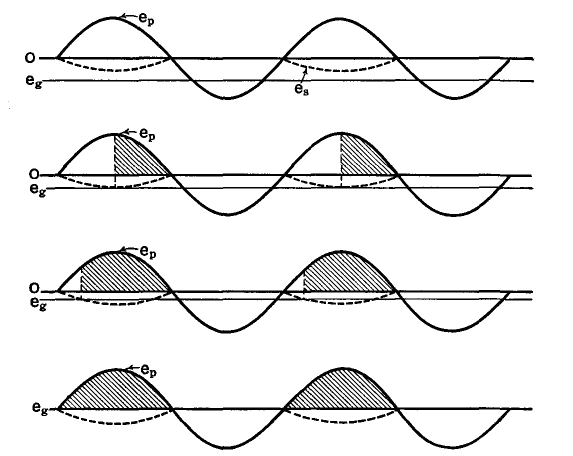| Basic Radio is a free introductory textbook on electronics based on tubes. See the editorial for more information.... |

|

Home  Basic Circuits Basic Circuits  Operation of Gas-Filled Tubes Operation of Gas-Filled Tubes  A.C. Plate Voltage and D.C. Grid Voltage A.C. Plate Voltage and D.C. Grid Voltage |
||||||






|
||||||
|
A.C. Plate Voltage and D.C. Grid VoltageAuthor: J.B. Hoag
We shall next examine some of the interesting possibilities of applying alternating voltages to both the grid and plate circuits of gas-filled tubes, as in Fig 19 C.
If the d.c. voltage on the grid is made still less negative, then the plate voltage will be turned on at an earlier time in the positive half-cycle and will continue to flow, in an amount proportional to the plate voltage, until that voltage has become zero. For zero grid voltage the plate current flows during the entire positive half-cycle, i.e., for one-half the total time. Thus, by a slight change in the grid voltage, it is possible to vary the plate current from zero up to a value equal to the average of a half-wave rectified current.
|
||||||
Home  Basic Circuits Basic Circuits  Operation of Gas-Filled Tubes Operation of Gas-Filled Tubes  A.C. Plate Voltage and D.C. Grid Voltage A.C. Plate Voltage and D.C. Grid Voltage |
||||||
Last Update: 2011-03-27



